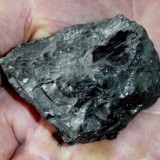From the Globe & Mail – March 31, 2011
A Chinese group is making a $1-billion bet on coal in British
Columbia to secure a key raw material for its steel making industry, the
latest in a series of moves this year by international companies to
stake a claim on Canadian resources.
A consortium of Chinese
companies, including Shougang Group, one of the country’s top steel
makers, plans to develop three underground coal mines in northeastern
B.C., a region rich with coal that fell on hard times in the 1990s but
is now booming again.
The goal is to start construction on the first mine late next year,
with the companies “moving forward at a very rapid rate,” said Pat Bell,
B.C.’s jobs minister.
“They have the fiscal resources already in
place to do it,” said Mr. Bell, who met with executives at Shougang and
other consortium partners in Beijing this week on a trade mission to the
country. “It’s a very big deal.”
Shougang’s move to take a direct
position in Canadian mines represents a new chapter in the push among
the world’s steel makers to secure long-term supply of the commodities
that go into making steel. The strategy is to lessen dependence on
mining companies, especially as commodity prices rise.
Metallurical
coal, the type found in the ground in rugged northeastern B.C., is one
ingredient. Iron ore is another, one which has led India’s Tata Steel
Ltd. to proposed mines in Quebec and Labrador, while ArcelorMittal SA of
Europe wants to build a mine in Nunavut, north of the Arctic Circle.
The
Chinese consortium’s domestic arm is Canadian Kailuan Dehua Mines Co.
Ltd., officially formed in early 2010 when Shougang joined. The
investors already included Kailuan, a mining company in China, and Dehua
Group, which opened for business in Canada in 2003 with the aim of
mining coal underground. It began an official process in 2006 but the
global recession delayed the effort.
The backers put $120-million
into Kailuan Dehua. The company wants to use a new regulatory review
system in B.C. that allows proposed mines to obtain necessary permits
and clear environment assessment requirements in one process.
Gething,
the main project, could produce two million tonnes of metallurgical
coal annually for 30 years, according to Kailuan Dehua’s website.
Mr.
Bell said the companies are looking to produce as much as eight million
tonnes a year from three mines. That figure is equal to about
one-quarter of all coal production in B.C., which is one of the leading
producers in the world and generates most of Canada’s coal for export.
To
develop mines to unearth that much coal would take at least $1-billion
in construction costs, based on an industry average development cost of
$125-million to $175-million per annual tonne. The mines would employ
1,200 and generate about 5,000 more indirect jobs.
The first
northeast B.C. coal boom came in the early 1980s, backed by demand from
Japanese steel mills and underpinned by more than $1-billion in
government funding to build the infrastructure necessary for mines in
the region. Not long after, however, the high-cost coal was slammed by
surging supply of cheaper coal from elsewhere in the world. By the early
2000s, every mine was shuttered.
But bolstered by higher coal
prices, there are four operating mines – open-pit surface operations –
in the region right now. China joins a crowded list of proposals for
additional mines, including Teck Resources Ltd.’s plan to resurrect the
Quintette mine, closed in 2000. Quintette could be once more producing
three million tonnes of coal by 2013.
“It’s definitely a boom
time. The northeast is really going great guns right now,” said Pierre
Gratton, chief executive officer of the Mining Association of B.C.
“There’s potential for a lot more.”
But there are potential snags in the Chinese proposal, including questions about labour, safety and export capacity.
On
labour, when Dehua first proposed Gething in 2006, the company said it
would likely bring in experienced underground coal miners from China.
Kailuan Dehua this month posted job notices for the mine and the best
paying jobs – as much as $45 an hour – require underground coal mining
or related experience.
Most of Canada’s coal mines are surface operations, though many other mines in the country are underground.
Kailuan Dehua said it may need workers from overseas.
“We
will keep looking for the workers in Canada. We’ll try our best here,
but we are not sure about the results,” said company administrator Peter
Shao.
Safety is another question, as underground mining in China
has killed several thousand people in each of the past several years.
Mr. Bell said he was assured by the consortium that their safety record
is on par with Western companies.
The last major question is
export capacity, with Ridley Terminals Inc. at Prince Rupert in
northwest B.C. near its limit. Ridley is owned by the federal
government. In the Conservatives’ dead-on-arrival federal budget, an
allowance was made for Ridley to tap capital markets for cash to expand –
and the terminal this week said it has received the official green
light to go ahead.
______________
COAL-FIRED B.C.
The
rising price of coking coal, used to make steel, has made the commodity
the province’s most important raw material for export, buoyed by
continued demand in Japan and new demand in China.
$5.1-billion: Value of B.C. coal exports in 2010 (more than entire wood products industry)
86%: B.C.’s share of Canada’s $6-billion of coal exports in 2010.
106%: Increase in value of B.C.’s exports since 2007 (underpinned by higher prices)
$804-million: B.C. coal exports to mainland China in 2010, (15 times more than $54-million annual average from 2003-07)
B.C. coal exports to China:
2010: $804-million
2009: $560-million
2008: $121-million
2007: $13-million
Read original article

